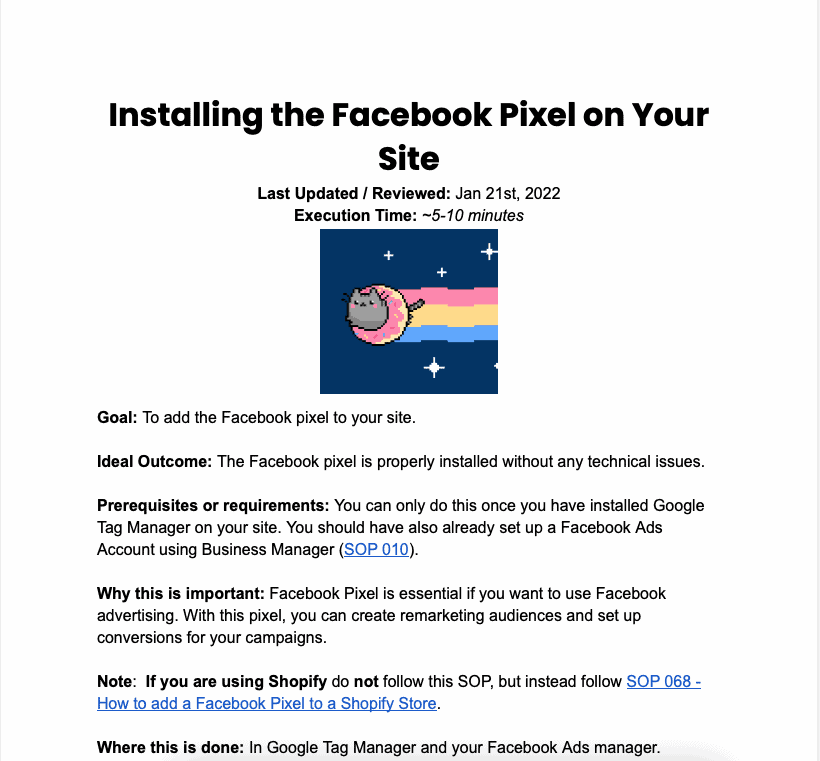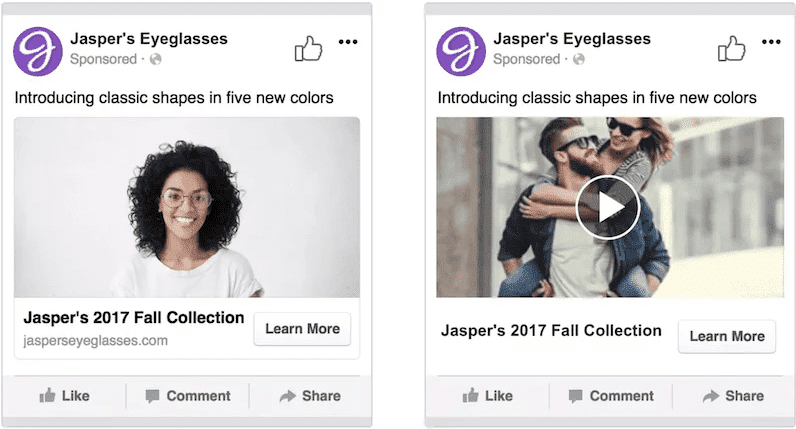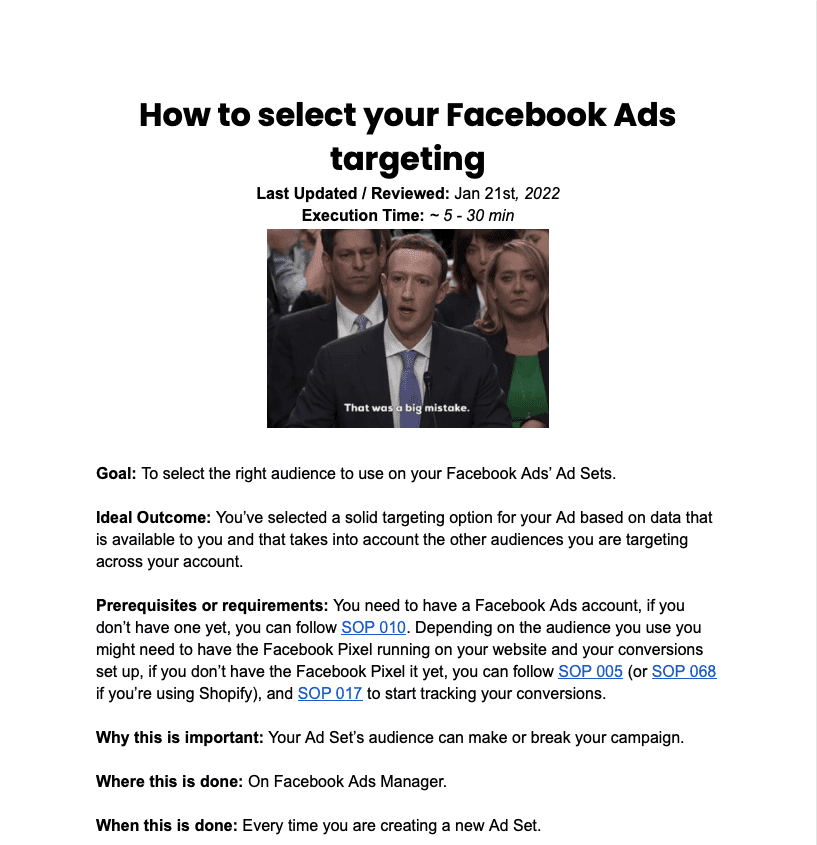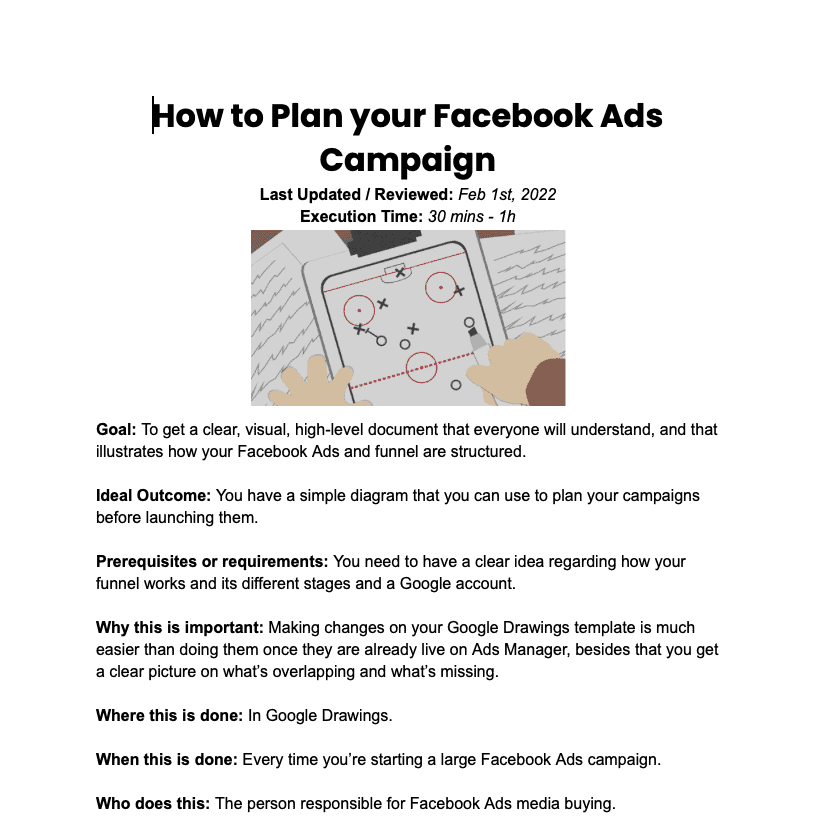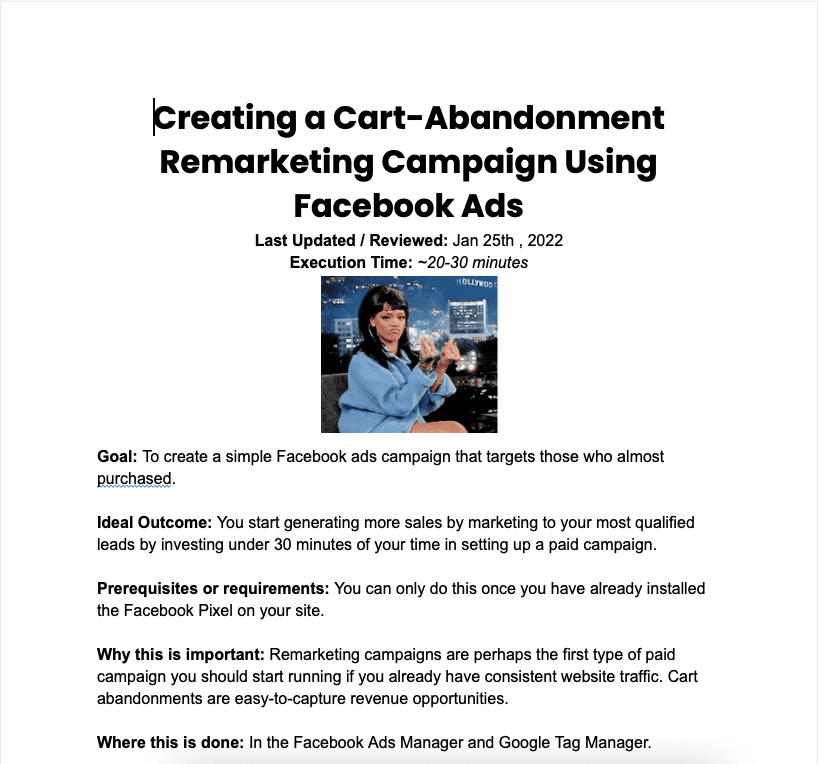Have you been wondering how to stretch your Facebook ad budget? You’re not alone. Many marketers are still wondering how to grow their organic reach, avoid the Facebook penalty and keep up with all of the changes at Facebook. It’s for these reasons I’ve put together a list of 8 ways to stretch your Facebook ad budget in 2022.
Factors that affect the cost of Facebook ads
Just like Instagram ads costs, Facebook ad costs are influenced by a number of variables.
First and foremost, the campaign objective you select for your campaign will have a significant impact on pricing since it relates to the value of the desired goal and where in the funnel your users are. For example, Brand awareness or Engagement campaigns will cost less than lower-funnel campaigns like Conversions that drive purchases. It’s easier to get someone to engage with an ad than it is to entice them to click through, open up their wallet, and complete a purchase.
Next, audience size plays a role in Facebook ad costs as well. Ads targeting larger and broader audiences will generally cost less than ads targeted at smaller audiences. You will typically see lower costs in prospecting, upper-funnel, cold-audience campaigns compared to retargeting, lower-funnel, warmer-audience campaigns because the audiences of the latter tend to be more specific and smaller in size—therefore more competitive.
Facebook’s algorithm is in constant learning mode, so it will continue to optimise your ads over time. The longer your campaign runs, the more data Facebook has to work with, which can result in lower costs.
This is where a high daily budget comes in handy. For example, if you have a $5 daily budget for a new ad set and only spend $1 on a given day, Facebook may take longer to exit the Learning Phase because it received less data to work with. The same will happen if you have a very low-performing ad set — if the ad set doesn’t reach Facebook’s minimum goal for engagement or conversion volume by the end of the day, then it may not be able to learn enough to optimise your ads well.
If your daily budget is on the higher end, Facebook may be able to exit the Learning Phase faster because it has enough data and a large enough audience pool to draw from. With a higher daily budget, Facebook also has more room in its budget optimisation algorithm to push your ads out more frequently, increasing your chances of getting new conversions and engaging with new users.
Bidding strategy is another factor that influences the cost of your Facebook ads.
A bidding strategy is the way you instruct Facebook to spend your ad budget, and there are a variety of options.
If you choose a lowest-cost bidding strategy, it will try to spend as little money as possible while focusing on getting the most out of your ad for you. A maximum value strategy prioritizes maximizing the value of each conversion. A cost cap strategy is more expensive than a lowest-cost option but allows you to set a limit on how much you’re willing to spend on each click or conversion. Similar to cost cap, minimum ROAS (return on ad spend) involves setting a specific dollar amount that you want to get back from each dollar spent. Finally, manual bidding gives you direct control over your bids for clicks or impressions, with no optimisation by Facebook’s algorithm.
Click-through rate can also play a role in you Facebook ad costs. If click-through rate is low, especially in a website traffic campaign, you may then see higher costs as Facebook understands that there may be some disconnect between your target audience and the messaging in your ads.
A healthy Facebook click-through rate is about 2%. More often than not, the higher your click-through rate climbs, the lower your cost per clicks will be.
There are many factors that influence the cost of Facebook ads, and the most important one is industry.As you saw in our benchmarks above, Facebook costs vary by industry, which also includes varying click-through rates. It’s also important to look at the ROI by industry. For example, the average CPA for restaurants is $12.91. But if your customer spends $50 and keeps coming back for years to come, you’re essentially making money off of that ad.
Of course, other factors play into ad costs as well, such as:
The level of competition in your industry (for example, in real estate)
How many times a user has converted on your site or app
Whether or not you’re advertising mobile or desktop apps
The cost of your product or service
Seasonality: Historically speaking, in the latter part of Q3 and Q4, costs tend to temporarily increase as the advertising landscape changes for the holiday ecommerce season. Competition ramps up as brands increase their budgets and gain more impression share, thus, increasing costs for all advertising brands.
Keep that in mind as you budget for the year and if you aren’t in ecommerce or running promotions during the end of the year, you may want to strategize on whether to keep a presence or to scale back.
Location: If you’re targeting a smaller metropolitan area like Peoria, IL versus New York City, your costs may be lower given that there will be less competition for those impressions.
Competition: The more saturated your industry is with advertisers, the higher costs will be. There are simply more brands vying for those same impressions and clicks from your target audience.
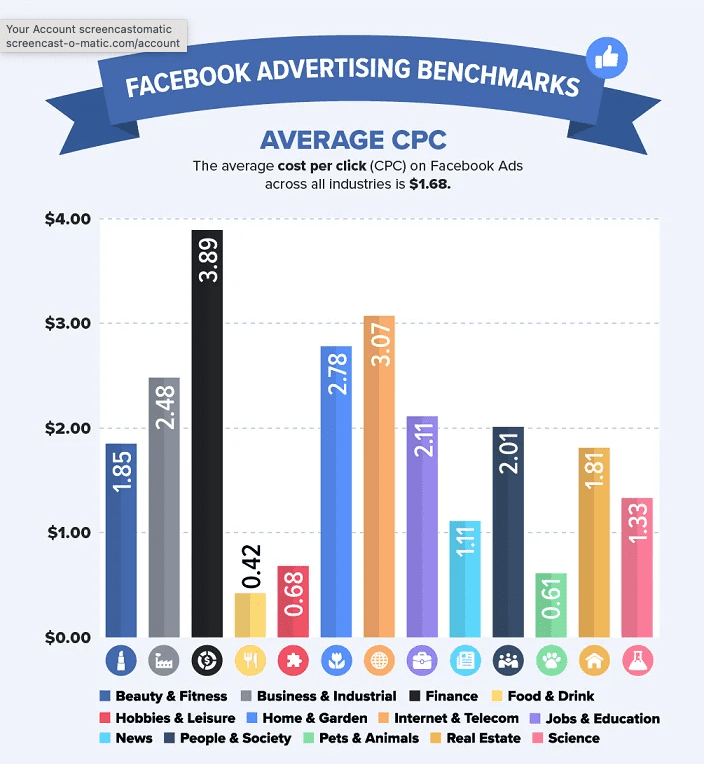
Source: Wordstream.com
Lowering your Facebook ad costs
Running a Facebook ad campaign isn’t easy! Success comes as a result of constant testing and optimisation. There are ways of making things easier and reduce your costs without having to take shortcuts. We’ve put together 8 proven ways to help you lower your Facebook ad costs.
1. Create a full-funnel strategy
To use your budget wisely, choose funnel-appropriate campaign objectives. In general, Awareness and Consideration campaigns are suited for the top of the funnel; Consideration and Conversion campaigns align with the middle of the funnel; and Conversion campaigns are best for bottom-funnel conversions.
In short, begin with upper-funnel campaigns to reach more people in your target audience at a lower cost, and then move your way toward conversion campaigns that optimize for your purchase-driving conversion events.
Note that some brands can certainly run a Conversion campaign targeting upper-funnel audiences with lower priced products or something that may make for a good impulse buy.
People can and do make purchases upon first interaction with a brand on Facebook, however, most will need more touch points from a brand so you can gain their trust, showcase your benefits, and entice them to convert.

Source: Wordstream.com
2. Use the Automatic Placements setting
While it can be tempting to pick and choose where you want your ads to appear within the Facebook network, the best way to save money is to start with the default Automatic Placements setting. In fact, not doing so is on our list of 7 Budget-Wasting Facebook Ads Mistakes. By appearing on all placements, Facebook can get a better idea on where to best serve your ads, thus lowering your costs. You’ll also get out of the learning period faster so that you can apply data-informed money-saving optimizations as soon as possible. Your targeting conditions will remain the same regardless of placement, which means Facebook can then serve ads to user in a lower volume, but lower cost placement that can help drive incremental revenue for you.
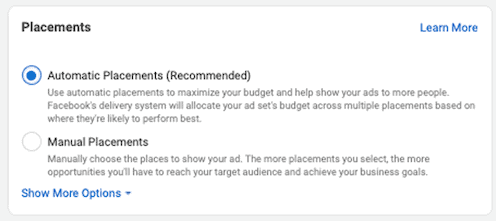
3. Broaden Your Audience
Your audience size impacts how much Facebook ads cost. So while you want to keep your targeting narrow, you should strive to make those targeted audiences as large as possible. This has become trickier as a result of privacy measures implemented by Facebook, but the benefit is increased privacy for Facebook users and the opportunity for marketers to target more precisely and identify more effective strategies for reaching their target audience. If you’re not sure where to start, look for commonalities among your current customers and try targeting people in your own network who share those characteristics.
- Check audience overlap
Check audience overlap. Facebook’s audience overlap tool can be instrumental in saving money. Let’s say you have one ad targeting an audience of people interested in startups and another ad for people interested in entrepreneurship. You have different Facebook ad copy and creative to appeal to these different audiences. However, the overlap tool shows you that half of the startup audience overlaps with the entrepreneurship audience. Knowing this, you can use exclusions so those ads don’t overlap. Otherwise, you’d lose money bidding against yourself.
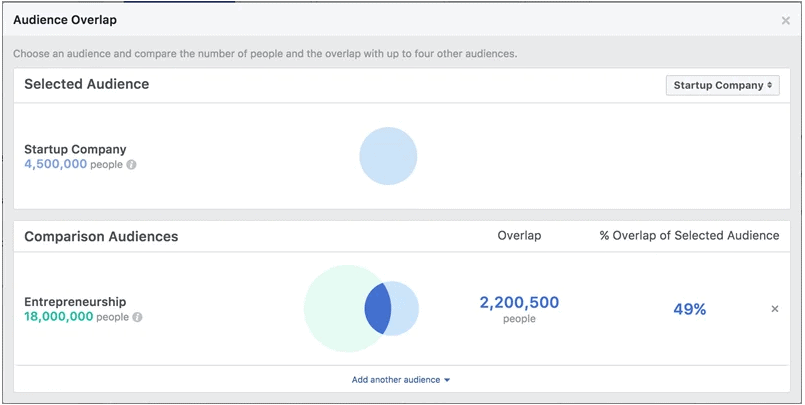
Source: Wordstream.com
5. Bid caps
Bid caps are the manual bidding strategy in Facebook ads, where you can set a maximum bid instead of allowing Facebook to dynamically bid based on your goals. But this should be used with caution. It’s for advertisers who have a solid understanding of the conversion rate and profit margin, and requires regular maintenance. If you set your bid cap too low, Facebook might have a hard time spending all of your budget.
6. Use the Pixel and the Facebook Conversions API
The goal of both of these pieces of technology is for you to track your ad performance. With visibility into what’s working and what’s not, you can allocate budget accordingly. You can also gain insights about the people viewing your ads, which you can use to further optimise your campaigns and maximise your budget.
The Facebook Pixel is still a thing, but it is losing its power since it’s cookie-based and cookies are crumbling. The Facebook Conversions API does not rely on cookies, but it doesn’t pick up the same exact information as the pixel. So, using the two together will ensure you capture the most accurate data. Refer to SOP “Installing facebook pixel on your site” below.
7. Run Facebook A/B testing
Facebook isn’t the set-it-and-forget-it type of platform. If you want to get the most bang for your buck, you’ve got to stay active, and that includes running tests at the ad level.
Running tests can help improve your engagement rates and CTR, which will stretch your budget further. Here are some tips on how to lower your Facebook ad costs through testing:
- Run A/B tests on ad sets
- Run A/B tests on ads
Lowering your Facebook ad costs can be tricky. If you’re reading this, you know as well as anyone that Facebook is constantly making changes to its platform, and sometimes those changes aren’t so great for advertisers.
But there are still plenty of ways to make sure your campaign achieves the results you want while keeping costs low. We put together a list of the top 8 ways we’ve found to help lower your Facebook ad costs—and get more bang for your buck.
8. Target your page fans separately
1. Target “People who like your page and their friends” with a different ad than what you’re showing other audiences because this audience will convert at a much higher rate than cold traffic, but remember: just because it converts better doesn’t mean you should spend more in this audience than other audiences.
2. Don’t target people who like your page if all you want them to do is engage with an ad, not convert—that will just cost you more money because they’re already familiar with your brand and content.
3. Target only the interests that are relevant to your business, even though Facebook gives users the option to select multiple interests when creating campaigns on its platform (such as beauty products or tech gadgets).
4. Use remarketing ads instead of retargeting
Considering the above facts, it should come as no surprise that Facebook Ads are more cost efficient per thousand impressions than other social media platforms. However, there are other factors to consider when making a final decision on where to spend your ad budget. No matter what platform you choose, keeping your costs down will always be an important element of running successful campaigns.
Dedicated to Your Marketing Success
John



